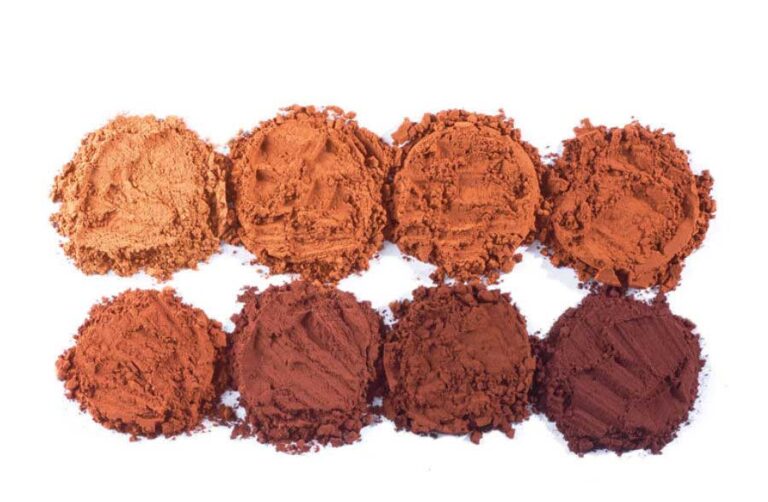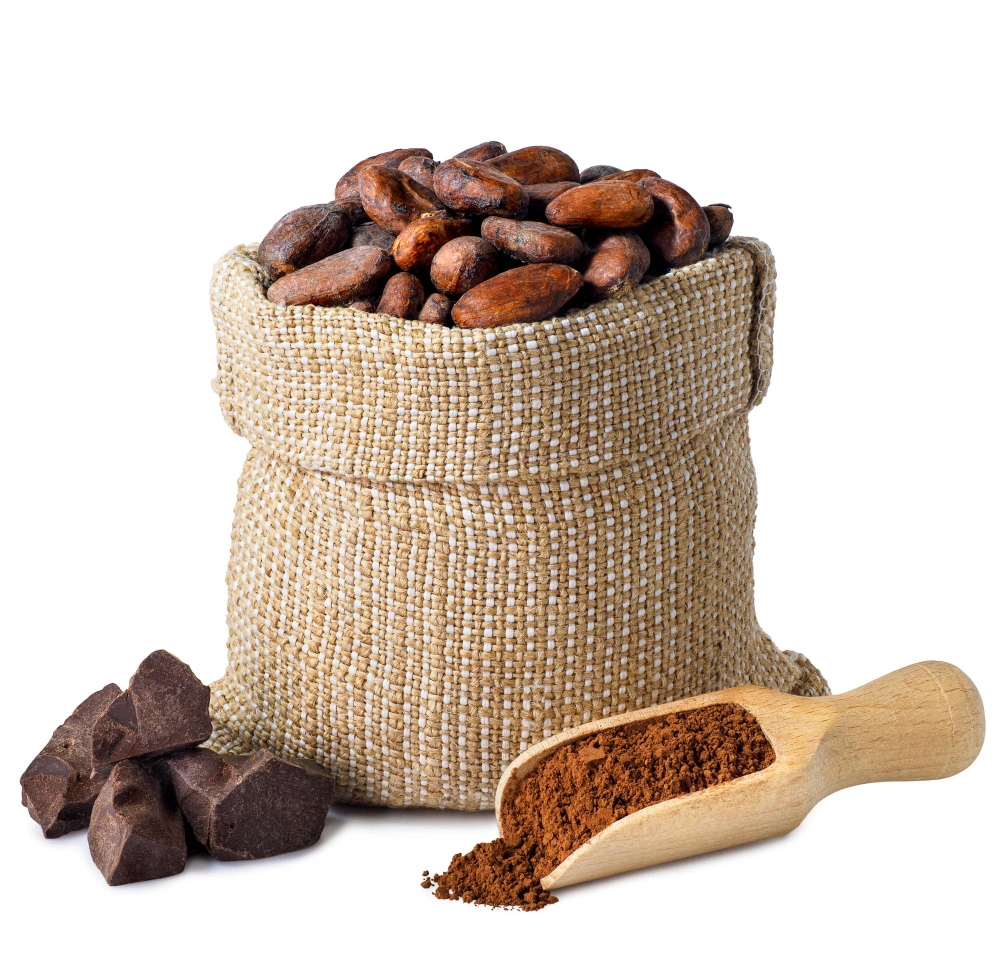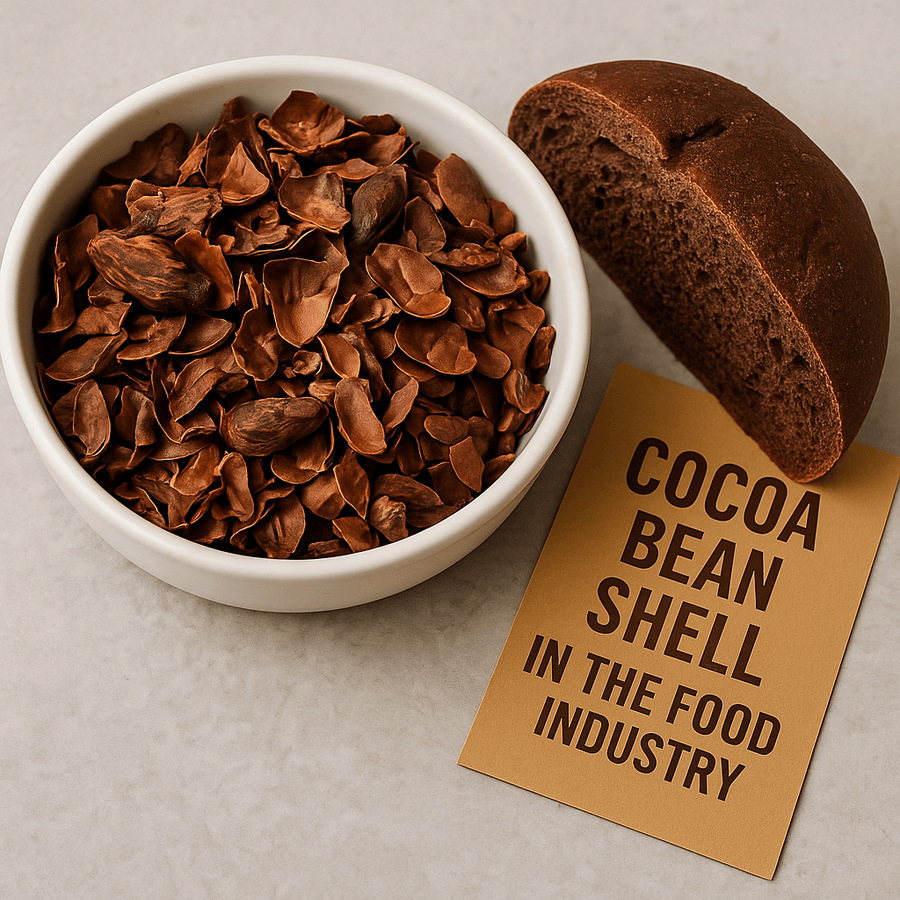Comprehensive Guide to Cocoa Powder Color

From a consumer’s perspective in Iran, when the final color of a chocolate product is darker and glossier, it is assumed that higher-quality cocoa powder has been used in its production. A product is first evaluated visually, and if its appearance is satisfactory, it is consumed, followed by a sensory evaluation of taste and aroma. For products that align with the visual preferences of consumers, it’s important to have a relative understanding of the colors of cocoa powder.
Study Guide
Types of Cocoa Powder Color

The Difference in Cocoa Powder Color in Dry and Wet Matter
As a food expert or technical product manager, it is important to recognize that in high-quality cocoa powders, there are significant color differences in both dry and wet matter across various types of alkalized and natural cocoa powders. While the color of two different cocoa powders may appear similar at first glance, their behavior when combined with dairy, oils, and even water shows different results. Specialized cocoa powders also have varying appearance and color properties in three environments: dairy, fat, and water. The choice of cocoa powder should be based on the final product environment. What sets a chocolate and confectionery producer apart is selecting the best raw materials for each product. Ultimately, the color and appearance of the wet matter should be the key criterion for assessment.
The Impact of Cocoa Powder on the Glossy or Matte Appearance of Products
In addition to focusing on the final product’s color, attention to its glossiness is also important. In global trends, the glossiness of the final product is given more priority than its matte appearance, as it adds more appeal to the product. One of the criteria for selection, alongside the color of the wet matter, is the product’s shine. In types of dark and dark cocoa powder, the impurities and minerals present in the dry matter can cause the chocolate and final product to become dull.


Factors Affecting the Color of Cocoa Powder
Several factors influence the color of cocoa powder, which can make it lighter or darker. Familiarity with these factors can help produce higher-quality, more consistent confectionery products that align with ideal expectations. The factors that affect the color of cocoa powder include:
- Cocoa Bean Shell (SHELL)
- Total Ash Content (ASHES)
- Alkalization Process (ALKALAZING)
Each of these factors plays a crucial role in the appearance and quality of chocolates. By adjusting the levels of these factors, noticeable changes can be observed in the final product.
The Impact of Cocoa Bean Shell (SHELL) on Cocoa Powder Color
If the cocoa bean shell remains during the process of separating the shell from the cocoa bean and producing NIBs, it can result in a darker color. Examining the amount of shell in the powder shows that to achieve a darker color in the dry matter, there is a higher amount of shell present. To further analyze this, the density of cocoa powder can be assessed. Impurities and minerals not only weaken the flavor and aroma profile but also lead to issues such as reduced solubility, sedimentation, and increased consumption and production waste to achieve the desired result.
One quick way to measure the amount of cocoa shell without checking the density is by observing the color difference between the dry and wet matter in the product. If there is no noticeable color difference between the dry and wet matter, it indicates a high amount of shell and lower quality cocoa powder, which is often seen in cheaper dark cocoa powders. Unfortunately, using the cocoa bean shell is an inexpensive way to improve the dark color and reduce the price. However, using dark cocoa powder containing shells, compared to cocoa powder free of shells, not only reduces the aroma and flavor of the product but also results in increased waste and higher consumption to achieve a similar visual result.


The Impact of Total Ash Content (ASHES) on Cocoa Powder Color
The ash content of cocoa powder is a valuable indicator of the composition of the cocoa beans and the region from which the cocoa originates. It provides an estimate of the cocoa quality, level of adulteration, and the amount of minerals present. The ash content of cocoa powder typically ranges from 8% to 14%. To determine the ash content, a weighed sample is incinerated until all organic material is burned off. The resulting ash is then weighed and expressed as a percentage by weight.
The total ash content in cocoa powder indicates the presence of minerals and shell impurities. An increase in ash content, along with a higher pH level, leads to a duller appearance of chocolate and cocoa products.
Alkalization Process (ALKALAZING)
An alkaline solution is used in cocoa powder processing to reduce acidity and darken its color. This process is known as alkalization, Dutch processing, or Dutching. The use of an alkaline solution in cocoa powder has several benefits. It can alter the flavor profile of the cocoa powder and improve its solubility in liquids, making it easier to use in recipes. However, it is important to note that the use of an alkaline solution also has potential drawbacks. The alkalization process can reduce the flavonoid content in cocoa powder, which are beneficial compounds with antioxidant properties.
In general, increasing the pH from 5.5 to 8.6 during the alkalization process helps improve the darker color of the cocoa powder.




